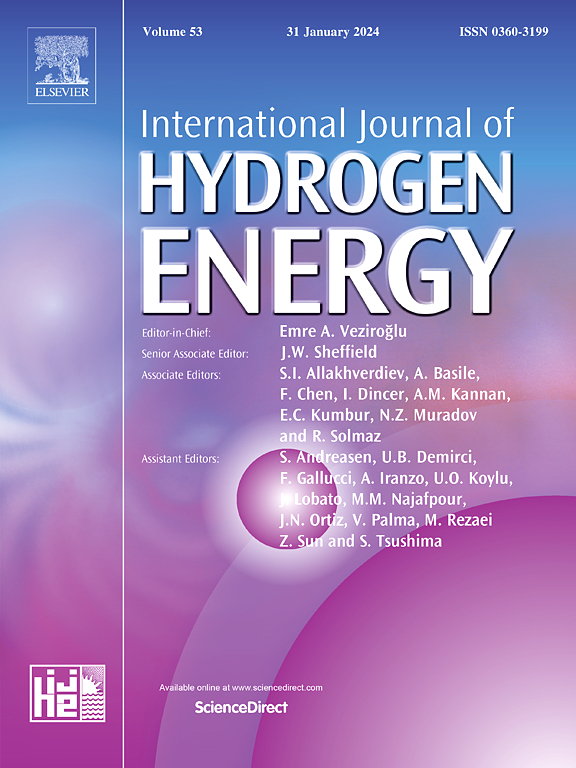Zn2Mo3O8/ZnMo8O10/Mo8O23 nanocomposites; structural properties, synthesis and its emerging application in electrochemical hydrogen storage
IF 8.1
2区 工程技术
Q1 CHEMISTRY, PHYSICAL
引用次数: 0
Abstract
Electrode materials based on zinc molybdenum oxides were designed by the saccharide-assisted sol-gel procedure for electrochemical hydrogen storage (EHS). By using different characterization methods to observe the formation of nanostructures, it was possible to determine that carbon texture was present on the nanostructured surfaces of zinc molybdenum oxides. The effects of employing various saccharides (mono, di, and poly saccharides) as carbon sources and fuel on the microstructure, electrochemical behaviors, and purity of synthesized samples were compared. The growth of nanocomposites including Zn2Mo3O8, ZnMo8O10, and Mo8O23 phases was facilitated by the saccharide. A charge-discharge method was used to build three-electrode cells and expose them to galvanostatic cycling. To ascertain the stability of electrode architectures, cycling performance at various rates was carried out. The samples' hydrogen storage capabilities were examined, and the sample generated with glucose showed an optimum capacity about 1017 mAhg−1 after 15th cycle.
Zn2Mo3O8/ZnMo8O10/Mo8O23 纳米复合材料;结构特性、合成及其在电化学储氢中的新兴应用
通过糖醛辅助溶胶凝胶法设计了基于锌钼氧化物的电极材料,用于电化学储氢(EHS)。通过使用不同的表征方法观察纳米结构的形成,可以确定锌钼氧化物的纳米结构表面存在碳纹理。比较了采用各种糖类(单糖、双糖和多糖)作为碳源和燃料对合成样品的微观结构、电化学行为和纯度的影响。糖促进了包括 Zn2Mo3O8、ZnMo8O10 和 Mo8O23 相在内的纳米复合材料的生长。利用充放电法构建了三电极电池,并将其置于电静态循环中。为了确定电极结构的稳定性,进行了不同速率的循环测试。对样品的储氢能力进行了检测,使用葡萄糖生成的样品在第 15 个循环后显示出约 1017 mAhg-1 的最佳容量。
本文章由计算机程序翻译,如有差异,请以英文原文为准。
求助全文
约1分钟内获得全文
求助全文
来源期刊

International Journal of Hydrogen Energy
工程技术-环境科学
CiteScore
13.50
自引率
25.00%
发文量
3502
审稿时长
60 days
期刊介绍:
The objective of the International Journal of Hydrogen Energy is to facilitate the exchange of new ideas, technological advancements, and research findings in the field of Hydrogen Energy among scientists and engineers worldwide. This journal showcases original research, both analytical and experimental, covering various aspects of Hydrogen Energy. These include production, storage, transmission, utilization, enabling technologies, environmental impact, economic considerations, and global perspectives on hydrogen and its carriers such as NH3, CH4, alcohols, etc.
The utilization aspect encompasses various methods such as thermochemical (combustion), photochemical, electrochemical (fuel cells), and nuclear conversion of hydrogen, hydrogen isotopes, and hydrogen carriers into thermal, mechanical, and electrical energies. The applications of these energies can be found in transportation (including aerospace), industrial, commercial, and residential sectors.
 求助内容:
求助内容: 应助结果提醒方式:
应助结果提醒方式:


